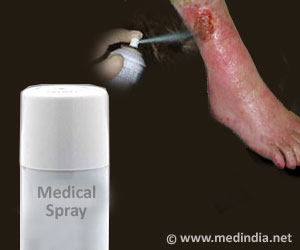A randomized clinical trial led by experts found a structured, standardized approach to diagnose and treat sepsis in its early stages did not change survival chances.

"We found no overall differences in two protocolized approaches when compared to conventional treatment. The study provides strong evidence that will have immediate consequences," said Derek C. Angus, M.D., M.P.H., Distinguished Professor and Mitchell P. Fink Chair, Department of Critical Care Medicine at Pitt, and investigator of the study. "Many organizations have endorsed structured guidelines for sepsis treatment that often call for invasive devices early in care. But with prompt recognition and treatment of the condition, we found that these approaches do not improve outcomes but do increase the use of hospital resources," said Dr. Angus.
The five-year, multicenter study, called "Protocolized Care for Early Septic Shock" or ProCESS, was sponsored by an $8.4 million grant from the National Institute of General Medical Sciences (NIGMS), part of the National Institutes of Health.
"More than 750,000 cases of severe sepsis and septic shock occur in the U.S. each year, most receiving care initially in an emergency department. We’ve found that if early recognition and treatment happen, one approach to supporting circulation while giving antibiotics is not better than another," said Donald M. Yealy, M.D., a ProCESS investigator and professor and chair of Pitt’s Department of Emergency Medicine.
"ProCESS set out to determine whether a specific protocol would increase the survival rates of people with septic shock. Instead, it showed something far more important—that over the past decade, the care of people with sepsis has significantly improved nationwide," said Sarah Dunsmore, Ph.D., who managed the ProCESS trial for NIGMS. "ProCESS showed that regardless of how the delivery of the interventions was monitored, sepsis patients in these clinical settings are receiving effective treatments."
A 2001 study in a Detroit hospital suggested that early, goal-directed therapy (EGDT), a treatment protocol that includes placing a catheter called a central line in the jugular vein to monitor blood pressure and oxygen levels, as well as delivery of drugs, fluids and blood transfusions according to target levels, reduced mortality by 16 percent.
Advertisement
Between March 2008 and May 2013, 1,351 patients with septic shock at 31 U.S. hospital emergency departments were enrolled in the trial. They were randomly chosen to receive EGDT, PSC or usual care for the first six hours of resuscitation.
Advertisement
"There have been many improvements in the management of sepsis in the past decade. We examined whether giving the medical team step-by-step instructions to monitor and treat the effects of sepsis could improve survival rates as the previous study suggested," Dr. Angus said. "EGDT, PSC and usual care all offer early diagnosis and methods to deliver fluids, restore blood pressure and monitor cardiovascular function; one was not better than the other to treat the condition effectively." Added Dr. Yealy, "We are not suggesting that sepsis care should be delayed or can be limited."
Source-Eurekalert









